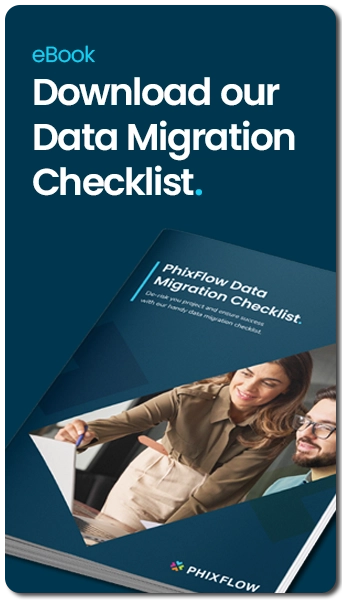Blog / Data Management / Why Integrated Billing and Management is Key in Telecoms
Why Integrated Billing and Management is Key in Telecoms
Discover how data integration and automation can transform billing and revenue management for telecom providers.
5 minutes read | by Andrew Stoddart | 10 April 2025
Billing and revenue management (BRM) is the beating heart of any successful telecommunications business. For providers in the UK and Ireland, where competition is fierce and customer expectations are sky-high, getting it right isn’t just important – it’s essential. However, there is a huge challenge. Data is often found scattered across multiple systems, which makes it difficult to ensure billing accuracy, prevent revenue leakage, and delivering a seamless customer experience can feel like an uphill battle.
This is where data integration comes in. By connecting your billing systems and processes, you can transform how your business manages its billing and revenue operations – saving time, reducing errors, and unlocking new opportunities for growth.
How Data Integration Transforms Telecom BRM
Say Goodbye to Revenue Leakage
Revenue leakage is a silent killer for telecom businesses – missed charges, incorrect tariffs, or delayed billing can quickly add up. With integrated data systems, you can ensure every call minute, text message, or data packet is accounted for. No more missed opportunities or unbilled usage.
Work Smarter, Not Harder
Disconnected systems mean manual work – re-keying data (or chair swivelling), cross-checking spreadsheets, and fixing errors. It’s time-consuming and prone to mistakes. With the right data integration solution in pace, you’ll be able to automate these processes, freeing up your team to focus on higher-value tasks.
Keep Your Customers Happy
Billing issues are one of the biggest drivers of customer complaints in telecoms, and the numbers back this up. In the first half of 2024 alone, billing-related complaints to the Communications Ombudsman in the UK surged by 63%.
Integrated systems address this by creating a single source of truth which reduces errors, simplifies billing processes, and builds trust.
Stay Ahead of Regulations
Telecom providers in the UK operate under strict regulatory frameworks set by Ofcom, the regulator responsible for ensuring fair practices and accurate billing across the industry.
Integrated data systems simplify adherence to regulations by consolidating billing data, automating compliance checks, and generating detailed reports. This reduces the risk of penalties while ensuring customers receive accurate bills.
Gain a Competitive Edge
In an increasingly saturated telecom market, standing out from the competition requires more than just great service, it demands innovation powered by data. Integrated systems provide the ability to harness data for actionable insights, enabling you to react faster to market trends, improve customer retention, and develop new revenue streams.
What Should You Look for in a Data Integration Solution?
Choosing the right data integration solution isn’t just about connecting systems, it’s about unlocking the full potential of your data to drive efficiency, innovation, and growth. Here’s what you should look for in a platform:
- Flexibility: Can it integrate seamlessly with your existing systems; billing platforms, CRMs, network monitoring tools – without requiring costly replacements or complex setups?
- Scalability: Will it handle the increasing volumes of customer and usage data as your business grows? Scalability is critical for telecom providers managing millions of transactions daily.
- Automation: Does it go beyond integration to automate repetitive processes like payment reconciliation, error correction, or invoice generation? Automation saves time and reduces operational costs.
- Advanced Analytics: Can it process complex, fast-paced data to uncover actionable insights? Telecom providers need solutions that help analyse trends like customer churn or usage patterns in real-time.
- Integrated Application Creation: Does it offer tools to build custom applications tailored to your unique workflows? Low-code platforms enable teams to create integrated apps quickly without relying on billing platform vendors, overstretched IT departments or extensive technical expertise.
- Security: Is it designed to protect sensitive customer information with robust encryption and compliance features?
Why PhixFlow is the Perfect Fit.
PhixFlow isn’t just a data integration tool, it’s an all-in-one platform built to meet the demands of fast-moving telecom businesses. Here’s how PhixFlow stands out:
Seamless Integration
Connect all your systems, from billing platforms and CRMs to network monitoring tools with ease.
Automation at Scale
Automate processes like error detection, invoice generation, and payment reconciliation to reduce manual effort and improve accuracy.
Powerful Analytics
Analyse complex datasets in real-time to spot trends, predict customer behaviour, and optimise operations.
Low-Code Application Creation
Build custom integrated applications using PhixFlow’s intuitive drag-and-drop tools, perfect for tailoring solutions to your business needs.
Scalable
Performance
Handle massive volumes of data effortlessly, whether you’re managing thousands or millions of transactions daily.
Robust Security Features
Protect sensitive customer data with enterprise-grade encryption and compliance monitoring.
With PhixFlow, you’re not just integrating data, you’re transforming how your business operates by automating workflows, gaining actionable insights, and building bespoke applications that drive efficiency and innovation.
Let’s Talk About Your Challenges
The data involved in Telecoms is complex, but your billing and revenue management doesn’t have to be. With the right data integration strategy in place, you can take control and focus on what really matters: growing your business.
Ready to see how PhixFlow can help? Get in touch today. We’d love to show you what’s possible.


